Here's my input on this. I will do a kind of write-up so those who never wheeled in that kind of stuff will know a little more.
Where I am (north west of Quebec province), mud is 75% of the trails we have. There are several variant of mud. Here's a list;
-Swamps ; real wet black soil covered by moss, if you see cattail, don't even think about it. STAY AWAY from cattail. You could lose your jeep completely if it's deep enough. Where there is cattail, there is no bottom. If you want to float on the moss, it takes wide tires, like 13,5 or wider. Try not to spin your wheel or moss will start to tear and you'll dig yourself. If it start digging, either you stop and go back, or snap it WOT and pray. Personnaly, when it digs, I choose option 2

more funny but so f*ckin dirty. Try to choose your line carefully, stay away from stumps, and if you can, go off track and keep your momentum. It is the key. But beware, you could find logs and rocks underneath.
If you get stuck and have to winch yourself out, use your slings and go around several trees (usualy they are rare and young/short and easy to extract, so be carefull.
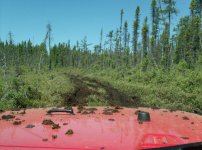
And if you choose option #2, you'll end up with this in your mirrors

so it might be helpful having a squeegee inside.
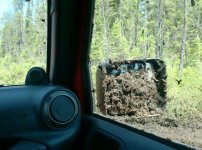
- Black soil ; almost the same as swamps, but no moss, usually less deep.
this picture show soft black soil, almost dry but still soft.
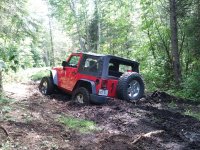
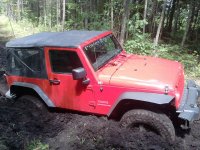
-A thing we call gumbo, it is a clay covered terrain, VERY slippery, virtually no grip when its wet, and real hard when dry. If you get stuck in this, you'll get sucked. When your rig is covered by that, it'll be way more heavy. It sticks everywhere. Your tires won't clean themselves if you have enough power to make them spin, cuz gumbo takes lot of power out of your engine.
Notice on second pic, the mud doing a lip around the sidewalls.
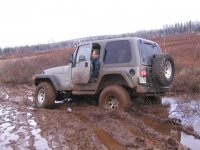
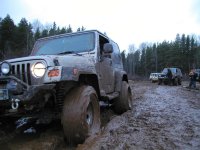
-The typical mud, its a mix between black soil, clay, and don't know what else. Has a brownish color, leaves big deep rut, mud holes, water holes.
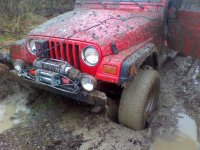
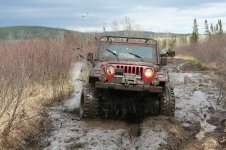
Then again, if you choose option WOT, you'll end up with this

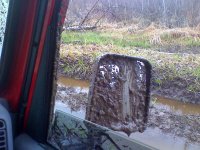
Tire deflation is preferable in any kind of mud. Some deflate more than others. Depends if you have beadlocks or not, of if you want the "cut through" effect of to float above. Personnaly, since I don't have beadlocks, I always deflate to 12-15 psi, just enough for a smooth ride, you get side bitter traction on the ground, and it helps not perforate with sharp roots/rocks.
And a few other advices.
-keep your momentum
-Don't try to crawl on mud, use 4 low, 2nd or even 3rd gear sometimes, lot of engine juice, I mean A LOT, don't be affraid to go over 3500-4000rpm. You can reach the red line without fear of breaking your engine.
-Lock the rear if possible, not the front, to keep control (may be necessary lock the front in some cases though)
-Keep your thumbs outside the steering spokes, hit a hidden stump or rock when gasing through mud, you'll get a violent bump steer, which could break a thumb easily.
-Watch the truck in front of you going through it before you do, and notice if it bumps or sinks, it will help you to know how your jeep will react.
Hope that helps! :standing wave:









